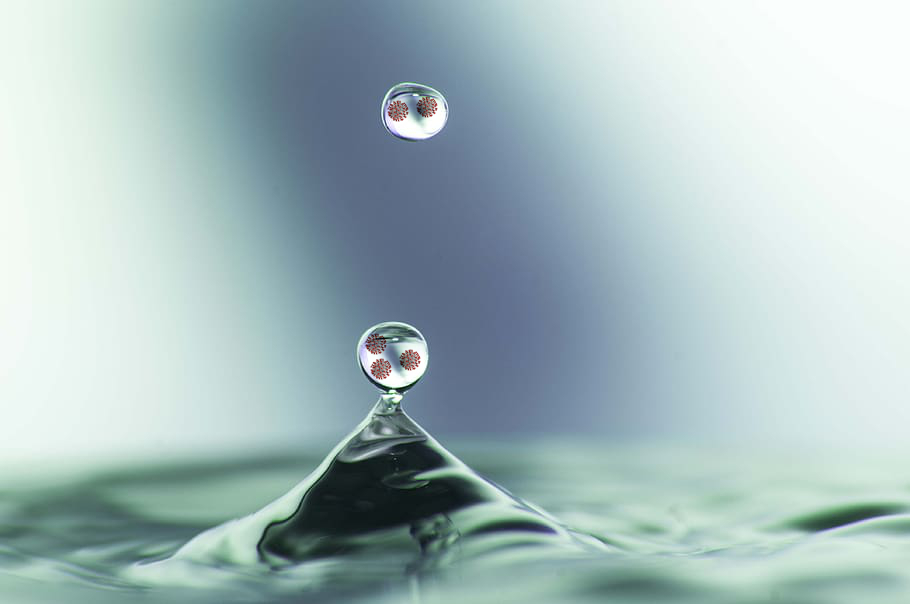Berkeley Lab researchers with expertise in lasers and in biology are working together to develop a platform and experiments to study the structure and components of viruses and to learn how they interact with their surrounding environment. The experiments could provide new insight on how to reduce the infectiousness of viruses such as the one causing COVID-19.
The platform will build upon Berkeley Lab’s world-leading R&D efforts in laser-based plasma acceleration, in which a laser pulse creates a plasma that in turn rapidly accelerates charged particles (electrons and ions).

This illustration shows the planned setup for laser-based virus droplet experiments at Berkeley Lab’s BELLA Center. (Credit: Tobias Ostermayr/BELLA Center)
The experiments will combine two techniques: X-ray imaging for structural information, and mass spectrometry to learn details about the chemical makeup of samples down to the level of individual proteins and molecules.
The secondary laser in the experiments will provide the spectroscopic information by charging up and breaking apart matter in the samples. Those bits and parts, such as individual protein components of a virus, can then be chemically measured and analyzed by a detector.
The goal is to study the virus in certain biofluids, like saliva, and how it reacts to compounds mixed into the droplets. Biosciences experts at Berkeley Lab will prepare the samples and participate in the data analyses.
In this pilot study, researchers will use surrogate viruses that have similar properties to the SARS-CoV-2 virus that causes COVID-19 but are safe for laboratory workers to work with.
Read more in the Berkeley Lab News Center.




